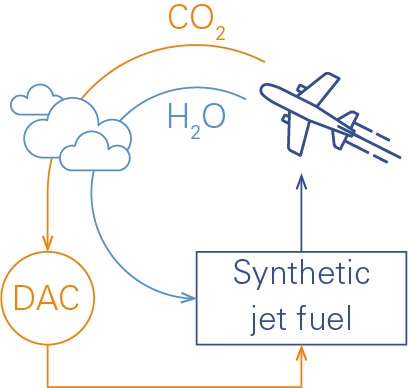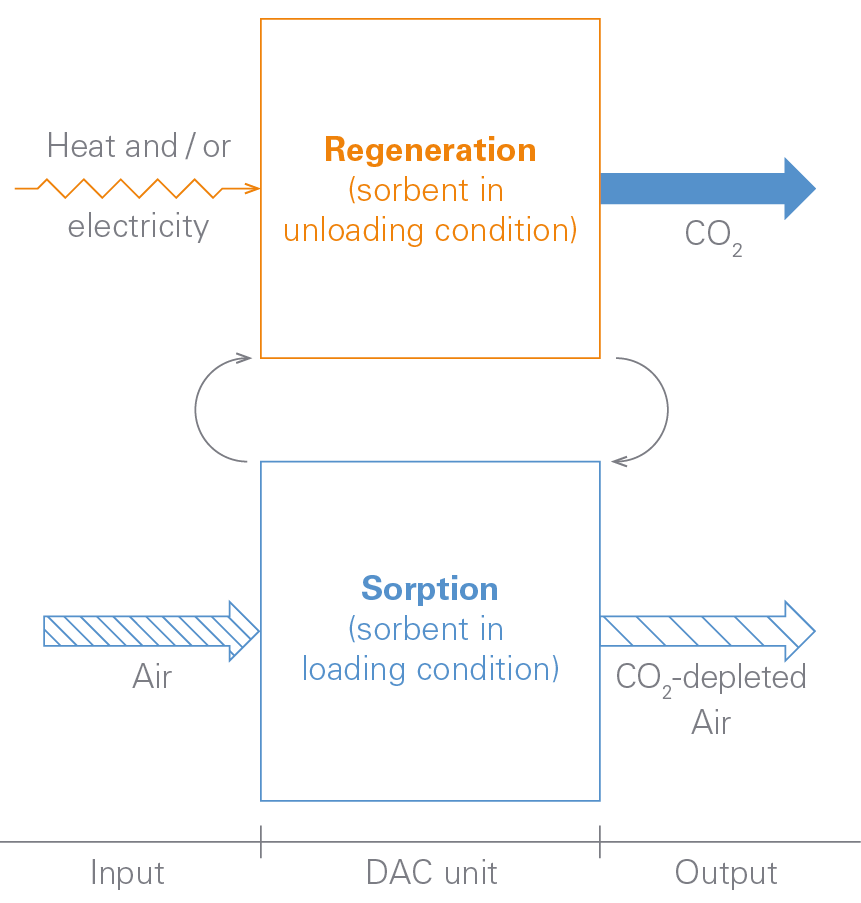A key option for decarbonising aviation is the use of synthetic fuels produced in Sunlight- or Power-to-Liquid processes. Direct air capture (DAC) technologies enable CO2 to be captured from the ambient air and used as an abundant and sustainable source of carbon for fuel production. For economically viable implementation, easily scalable and energy-optimised solutions are required.

Bauhaus Luftfahrt investigates future perspectives of a growing range of DAC technologies, which are being tested on a laboratory scale up to the first pilot plants. Approaches differ in the choice of sorbent (liquid or solid) and the form of CO2 binding as well as the energy required for the subsequent release.
Bauhaus Luftfahrt has identified technology-specific levers to significantly reduce thermal and / or electrical energy requirements and to optimise productivity. For example, the potential for heat integration with the exothermic fuel manufacturing process has been quantified as an inherent benefit of low temperature approaches. In addition, identified material- and process-related main parameters include e.g. CO2 adsorption kinetics, selectivity, and heat transfer. Newer electrochemical approaches, which do not require thermal but only electrical energy, also open up perspectives for lower energy requirements.
The core result is that the technology options identified could significantly improve the efficiency of DAC-based fuel production. These findings flow into integrated, techno-economic potential studies and life-cycle assessments to support decisions regarding sustainable fuel strategies.
Ebner, K., & Koops, L. (2021). Health Monitoring, Fault Diagnostics, and Failure Prediction for Fuel Cells in Aviation. 11th EASN International Conference on Innovation in Aviation & Space. Virtual event.
Ebner, K., & Koops, L. (2022). Potentials of Prognostics and Health Management for Polymer Electrolyte Fuel Cells in Aviation Applications. Aircraft Engineering and Aerospace Technology, Manuscript accepted for publication. doi:10.1108/AEAT-01-2022-002



